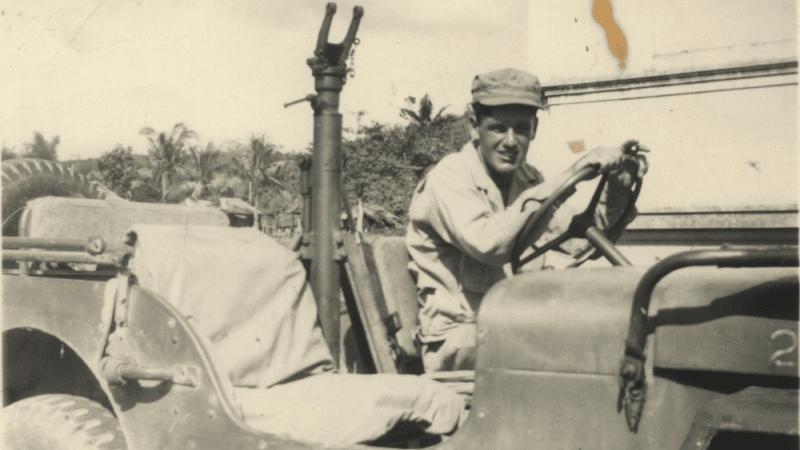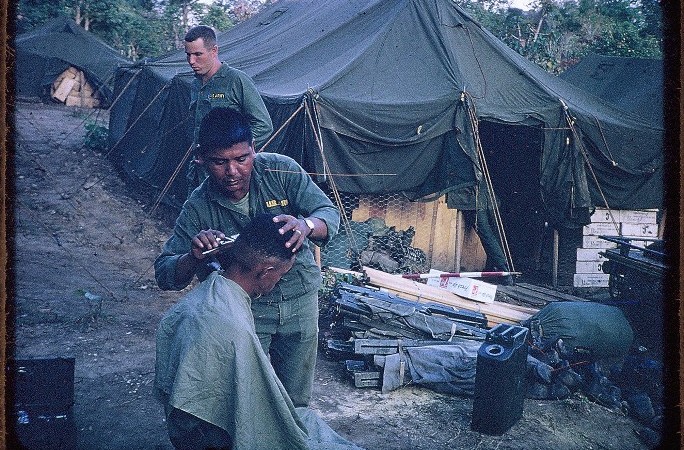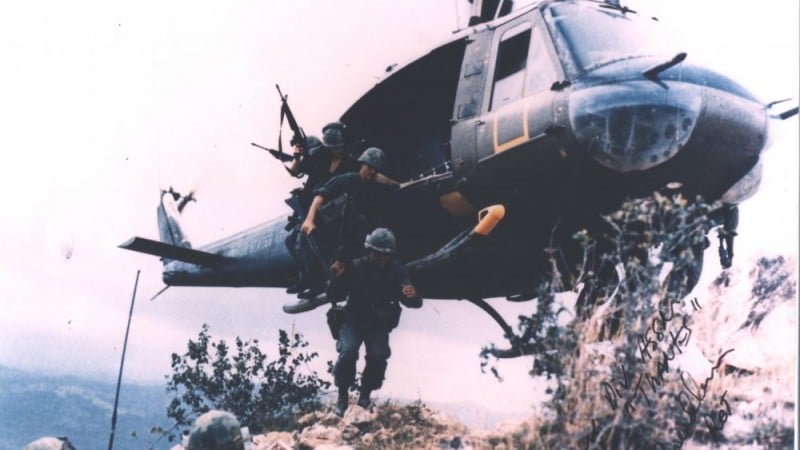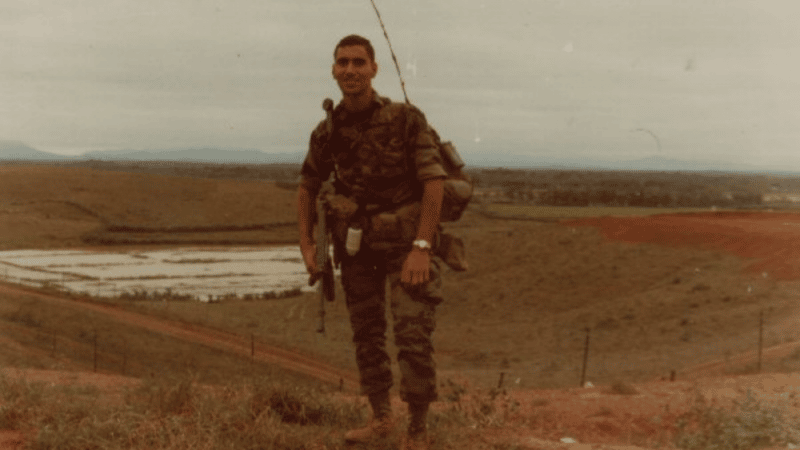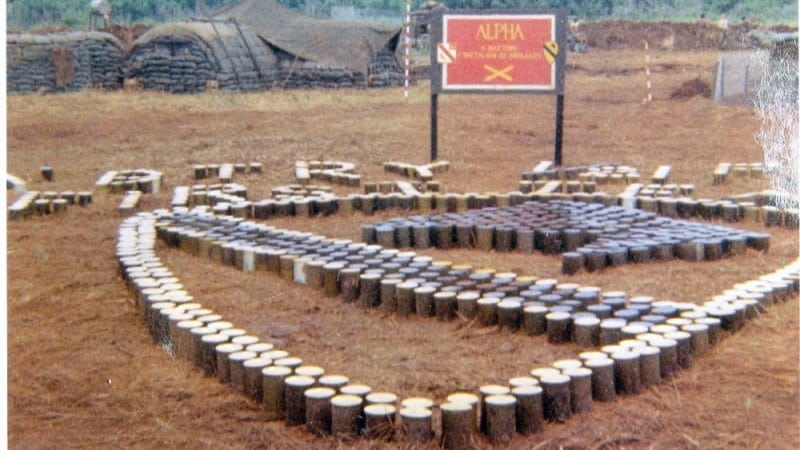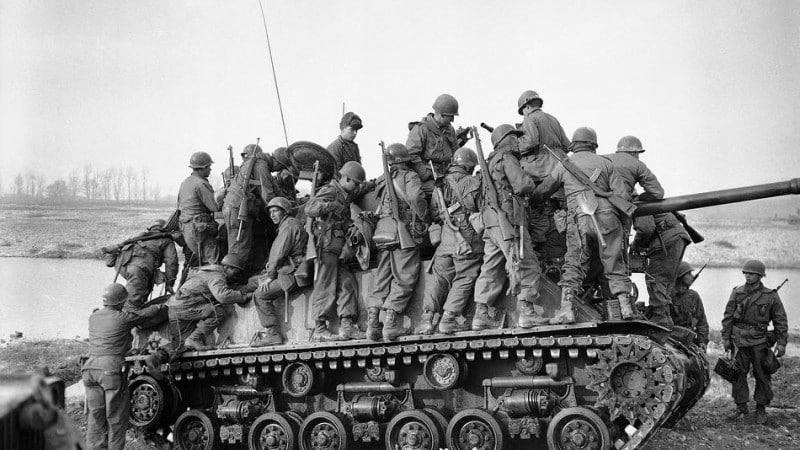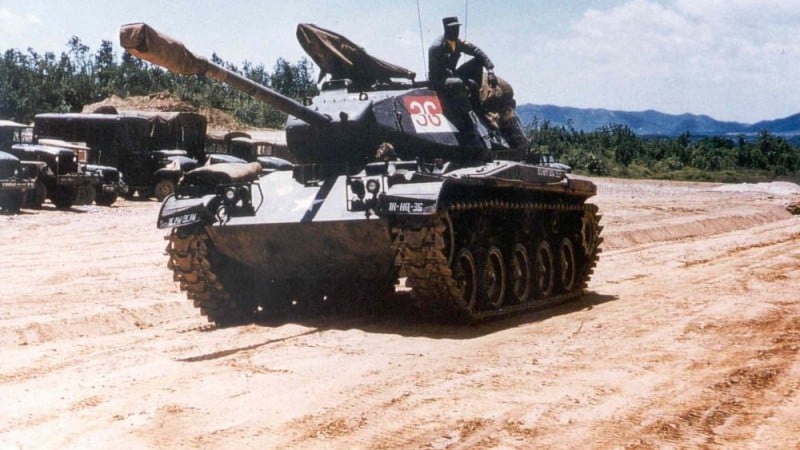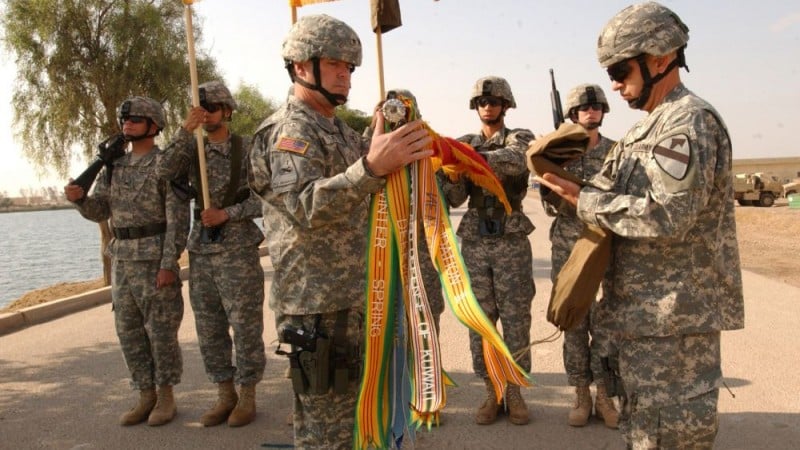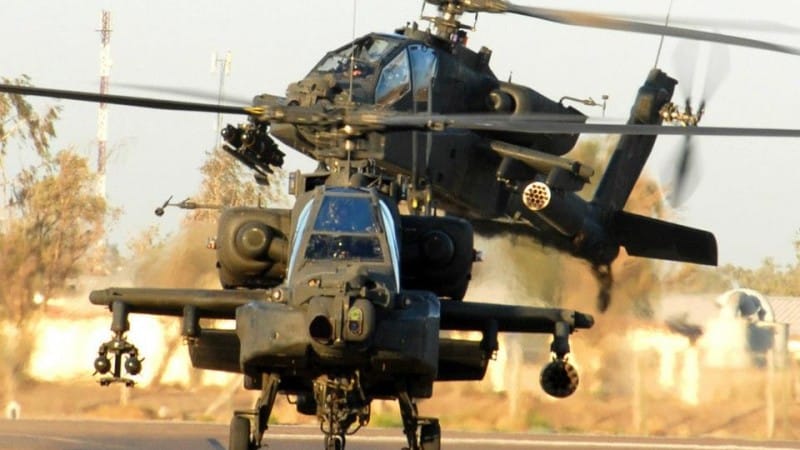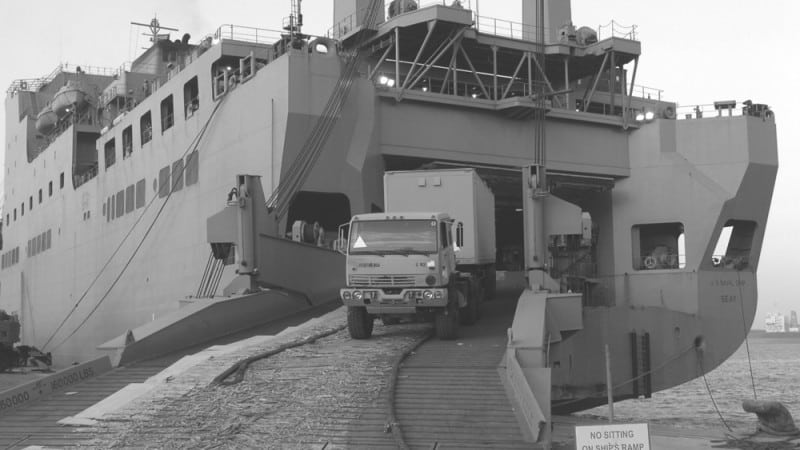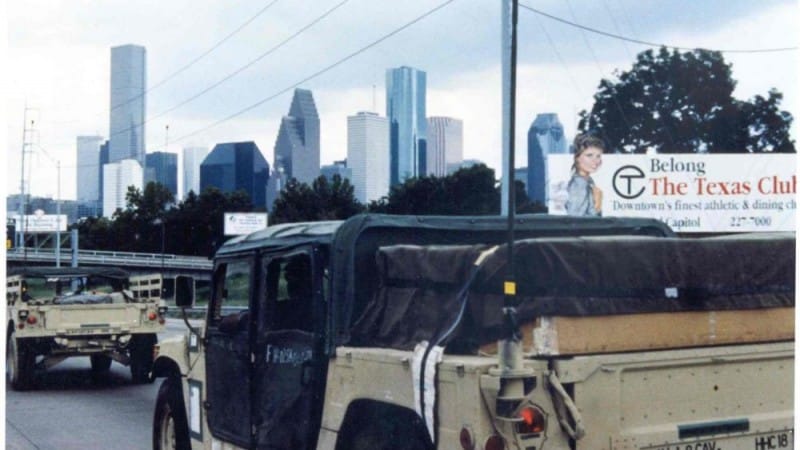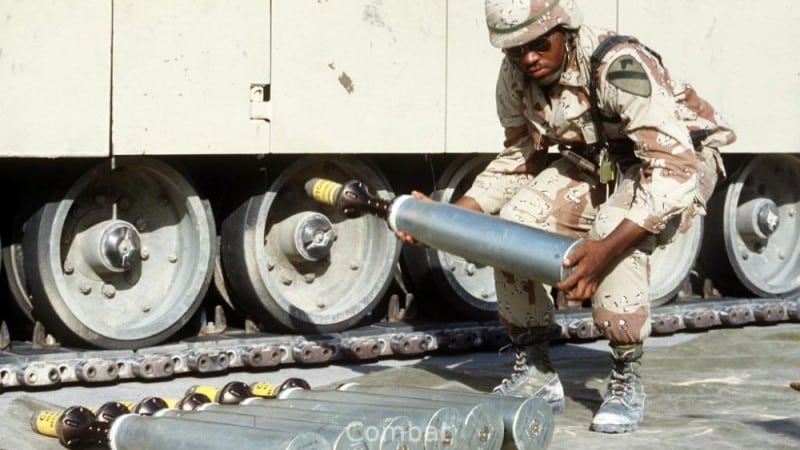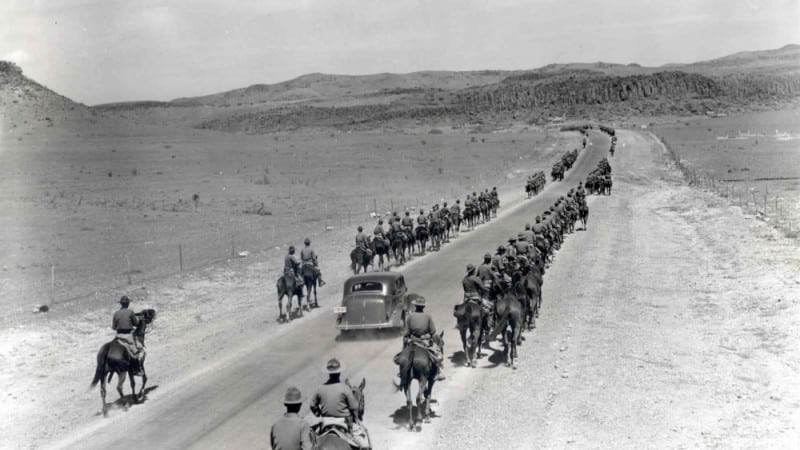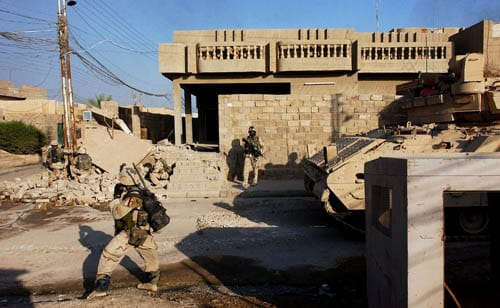1st Battalion, 21st Field Artillery
PROGRESSI SUNT
(They Have Advanced)
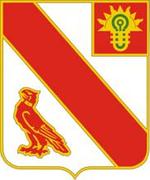
The roots of the 21st Field Artillery can be traced back to 1 July 1916 when it was constituted in the Regular Army and organized at Camp Wilson, Texas on 1 June 1917. It was assigned to the 5th Division in 1917 and saw action in France during World War I. On 1 June 1918, the regiment sailed from Halifax on the U.S. “Burma”, arrived in France on 19 June and proceeded to Valdahon (Doube) to continue its training. The unit remained at Valdahon until 29 July and two days later joined up with the 5th Division in the St. Die Sector (Lorraine).
On August 17, 1918, at 0404 hours, the 21st Field Artillery began an artillery bombardment on Frapelle, supporting the 5th Division. The mission consisted in seizing Frapelle and Hill 451, north of the village. The Germans began return fire at 0406 hours, but the assault of the 5th Division could not be stopped. At 0630 hours, the village of Frapelle was liberated after four years of German occupation. The Germans immediately started a massive bombardment of the Americans, which lasted for three days and nights. The men of the 21st Field Artillery reorganized their positions. A German counterattack failed on August 18 and by August 20, the American positions were completely consolidated. The 21st Field Artillery remained with the 5th Division until 23 August when it moved on to the Arches Area (Vesges) for rest and further training.
In the first part of September, the regiment, along with the division, moved to the Area of the American First Army Corps and relieved elements of the 90th Division in the Villers-en-Haye sector (Lorraine) on 08 September. From that location, they were engaged in the St. Mihiel operation from the 12th to 16th of September. Subsequently the unit was attached to the 78th Division and remained in the Limey Sector (Lorraine) until 03 October, when it was ordered to the 90th Division which at that time was holding the Puvenelle Sector (Lorraine). The 21st remained with the 90th Division until 10 October, when the 7th Division assumed the 90th’s responsibilities in the area. The 21st continued to serve with the 7th Division until the Armistice.
On 22 July 1919, the 21st Field Artillery returned to the United States on the S.S. “Rotterdam” and proceeded to Camp Bragg, North Carolina where it was relieved from assignment to the 5th Division and inactivated on 23 September 1921.
World War II
On 23 March 1923, as part of the military buildup prior to World War II, the 21st Field Artillery was assigned to the 9th Division and before being activated was relieved 1 January 1930 and reassigned to the 5th Division (later redesignated as the 5th Infantry Division). The 21st Field Artillery was activated on 06 October 1939 at Fort Knox, Kentucky. On 1 October 1940, the unit was reorganized and redesignated as “A” Battery, 21st Field Artillery Battalion. On 20 December 1940, the 21st Field Artillery joined the 5th Division at Fort Custer, located at Augusta, Michigan.
In August 1941, the first of a series of staging movements to Iceland began for the 5th Division. As an element of the 5th Division, the 21st Field Artillery was shipped to Iceland with the last units of the division arriving 16 May, 1942. While in Iceland, the 21st Field Artillery under the command of the 5th Division performed arduous and monotonous duties of manning artillery observation posts, unloading boats, building roads and buildings and constant training schedules.
In August 1943, the Division moved from Iceland to Tidworth Barracks, England then in October, on to Northern Ireland for advanced training for the invasion of France. As an element of the 5th Division, the 21st embarked at Utah Sugar Red Beach, on 09 July 1944 in the St. Mere Eglise area and was assigned to the V Corps, First Army and supported the division in its launch of the first attack at Vidouville on 26 July 1944. The 21st Field Artillery participated in the major campaigns of the European Theater of World War II, Normandy, Northern France, the Rineland, Ardennes-Alsace and Central Europe. Returning to the United States, the unit was inactivated on 20 September 1946, at Ladd Field, Alaska.
Korean War
During the time period of the Korean War buildup, the “A” Battery, 21st Field Artillery was activated on 3 June 1948 at Fort Jackson, South Carolina and inactivated on 30 April 1950 at the same station. The Unit was reactivated on 1 March 1951 at Indiantown Gap Military Reservation, Pennsylvania and later inactivated on 1 September 1953. On 25 May 1954, “A” Battery, 21st Field Artillery was activated at Augsburg, Germany. On 1 June 1957, the Unit was inactivated and relieved from assignment to the 5th Infantry Division and was concurrently redesignated as Headquarters and Headquarters Battery, 1st Battalion, 21st Artillery, a parent regiment under the Combat Arms Regimental System. On 1 July 1960, the Unit was redesignated as Headquarters and Headquarters Battery, 1st Howitzer Battalion, 21st Artillery and concurrently assigned to the 1st Cavalry Division and activated in Korea.
On 1 September 1963, the Unit was redesignated as 1st Battalion, 21st Artillery. The 21st Artillery was stationed at Camp Howze with the 1st Cavalry Division until it went home on 01 July 1965. The division was only stateside long enough to be reorganized and be prepared for a new mission. On 3 July 1965, in Doughboy Stadium at Fort Benning, Georgia the colors of the 11th Air Assault Division (Test) were cased and retired. As the band played the rousing strains of Garryowen, the colors of the 1st Cavalry Division were moved onto the field.
Vietnam War
In September 1965, the 1st Cavalry Division Artillery units were deployed in Vietnam. The 1st Battalion, 21st Field Artillery landed in Vietnam at Qui Nhon and was soon in firing position to support the 3rd Brigade. Very few major engagements were fought without artillery support. From the first engagement of the 1st Cavalry Division with North Vietnamese troops in 1965, the Tet Offensive of 1968, and the many support missions fired, the Field Artillery provided the quantity and quality of fire support that won the admiration and respect of the infantry. As stated by Rudyard Kipling so many years ago: An as their firin’ dies away, the ‘usky wisper runs, from lips that ‘aven’t drunk all day: The guns! Thank Gawd, the guns!
The battalion’s first major engagement was in the Pleiku Campaign designed to relieve enemy pressure on the ARVN and Special Forces bases in the Pleiku-Ia Drang area. The most important battles of the Pleiku action came at LZs Albany and X-Ray in mid November. On the night of 14 November, the battalion pumped out more than 4,400 high explosive rounds from their position at LZ Falcon to protect the embattled Skytroopers at LZ X-ray. The battalion also participated in the last major action in 1965, Operation “Clean House”, in which the 3rd Brigade swept a valley northeast of Binh Khe in Binh Dinh Province.
The war in Vietnam saw another change in the employment of artillery tactics. Front lines common in previous wars were replaced by perimeter defenses. The helicopter became a prime mover for artillery giving increased mobility. Artillery units occupied fire support bases and could fire 360 degrees in support of operations. The ability of the artillery to provide rapid and devastating fire support at critical times often spelled the difference between victory and defeat.
“Masher/White Wing” which were code names for the missions in Binh Dinh Province began on 25 January 1966. “Masher/White Wing” utilized the unique innovation. A special sling was developed that allowed the huge C-54A Skycrane Helicopter to airlift 155mm towed howitzers to firing positions previously considered inaccessible for the 13,000 pound weapon. The mission ended 06 March 1966, with the enemy losing its grip on the Binh Dinh Province; however, its name would be heard again and again during the next six years.
During Operation Paul Revere II, on 8 August, “A” Company, 1st Battalion, 7th Cavalry came under heavy fire in the vicinity of LZ Juliet. Charlie Battery, 21st Artillery quickly answered an urgent call for artillery support, delivering 1,408 high explosive rounds in two hours that eliminated 98 NVA. Through the rest of 1966, the battalion alternated between base defense of division headquarters at Camp Radcliff and support for the 3rd Brigade in search and clear operations throughout the III Corps area.
In mid July 1967, the battalion temporarily moved to the area north of Kontum for Operation “Greeley”. In late September, the 3rd Brigade and the 1st Battalion moved into the I Corps Tactical Zone, in Operation “Wallowa”, to relieve the 5th Marine Regiment at Hill 63 (which was renamed “Baldy”). In January 1968, when the communists began their all out “TET” Offensive, the Battalion moved to I Corps and the areas around Hue in February. The drive to Hue was characterized by fierce, close contact. By the time Hue was captured at the end of February, the battalion had fired 52,171 rounds to support the advance of the 3rd Brigade.
In October, the 21st moved south to the III Corps Tactical Zone. By November, the battalion and its units were in place in the Quan Loi area. The base frequently received incoming rounds during November and December. After receiving 36 hits on 09 December, the battalion responded by firing 1,000 rounds against suspected enemy locations. Aggressive enemy action declined. In February 1969, the organic units of the battalion were spread throughout the operational areas of the division.
In July 1970, the 1st Cavalry Division continued the task of clearing the remaining NVA combat elements from the area of III Corps north, east and west of Saigon. Much of this action was supported from firebases which were able to provide field combat units a self directed protective coverage of firepower to their identified targets over a wide area of remote operations. In addition, most firebases were located close enough so that they could direct protective fire support on each other’s perimeter if necessary. Typical artillery support was performed by the “B” Battery, 1st Battalion, 30th Artillery out of Firebase “Moe”, a one battalion sized firebase, located in Song Be Province northwest of Saigon approximately two kilometers from the Cambodian border. In addition to other elements, the firebase was equipped with the medium artillery platoon consisting of three 155 Howitzers and staffed by a platoon leader, an XO, a fire control officer, and 50 Troopers.
During the Vietnam War, the 1st Battalion, 21st Artillery participated in 16 different campaigns, including the Tet Counteroffensive and Counteroffensives I thru VII. The 26 March 1971 officially marked the end of duties in Vietnam for the 1st Cavalry Division. On 1 September 1971, the 1st Battalion, 21st Artillery was redesignated the 1st Battalion, 21st Field Artillery. President Nixon’s program of “Vietnamization” required the continued presence of a strong U.S. fighting force. The 2nd Battalion of the 5th Regiment, 1st Battalion of the 7th Regiment, 2nd Battalion of the 8th Regiment and 1st Battalion of the 12th Regiment, 1st Battalion of the 21st Field Artillery, “F” Battery of the 28th Artillery, “F” Battery of the 77th Artillery (Aviation), “F” Battery of the 79th Artillery (ARA) along with specialized support units as “F” Troop, 9th Cavalry and Delta Company, 229th Assault Helicopter Battalion helped establish the 3rd Brigade headquarters at Bien Hoa. Its primary mission was to interdict enemy infiltration and supply routes in War Zone D.
By 31 March 1972, only 96,000 U.S. troops were involved in the Vietnam combat operations. In less than two months later, the last of the 1st Cavalry Division, the 3rd Brigade, began its “Stand Down” in a phased withdrawal and was bought back to the United States, completing the division recall on 26 June 1972, which had started over a year earlier on 05 May 1971. The 1st Cavalry Division had been the first army division to go to Vietnam and the last to leave. On 13 September 1972 the 1st Battalion, 21st Field Artillery was relieved from assignment to the 1st Cavalry Division and assigned to the 4th Infantry Division.
On 19 December 1973, the 1st Battalion, 21st Field Artillery was inactivated at Fort Carson, Colorado. On 21 April 1975, the Unit was relieved from assignment to the 4th Infantry Division. Concurrently, the 1st Battalion, 21st Field Artillery was assigned again to the 1st Cavalry Division and activated at Fort Hood, Texas. On 02 July 1986, the 1st Battalion, 21st Field Artillery was inactivated; except “A” Battery, which continued to serve the 1st Cavalry Division.
Persian Gulf War, Southwest Asia
In August 1990, the 1st Cavalry Division was alerted for deployment to Southwest Asia as part of the joint forces participating in Operation Desert Shield. The focus at that time was the defense of Saudi Arabia against potential Iraqi attack. The First Team Soldiers flew from Robert Gray Army Airfield to Dhahran International Airport via Paris, France and Cairo, Egypt. As soon as their equipment arrived, they moved to the remote Assembly Area Horse (AA Horse) in the Saudi desert 160 miles west of the airport.
By 13 January 1991, the division moved north toward the juncture of the Saudi, Iraq and Kuwait borders through a series of defensive positions designed to thwart any preemptive attack along the Wadi. Meanwhile, the air war began and other Allied ground forces began to reposition for the offense. The “Red Team” began a calculated war of deception along the Saudi border. Among the various actions taken were: The First Team’s Multiple Launched Rocket Systems (MLRS) repeatedly lit the sky, battering targets deep in Iraq; Cannon batteries fired Copperhead rounds (computer controlled, rocket assisted projectiles) and thousands of high explosive along with improved conventional munitions into Iraq. The goal was to lure Saddam Hussein into believing the main ground attack of the Allies would come up the Wadi al-Batin, a natural invasion route, causing him to reposition additional forces there. The deception consisted of three major thrusts.
“Operation Red Storm”, 16 February 1991: Operation Red Storm, a VII Corps Artillery-Aviation raid up the Wadi Al – Batin, was designed to make the Iraqis believe that the Wadi was being prepped for the main offensive. It utilized the resources of the 11th Aviation Brigade, the 1st Cavalry Division Artillery, and elements of the VII Corps Artillery. Just prior to 0100 hours, 16 February 1991, the artillery units fired a three minute prep on selected targets, followed by Apache attack helicopters crossing the Berm to engage targets of opportunity. In conjunction with this action, USAF assets attacked targets deep in Iraqi.
“Operation Knight Strike”, 19 February 1991: A reconnaissance in force conducted by TF 1-5 CAV up the Wadi Al-Batin to determine the strength, composition, and disposition of Iraqi forces in the area. This operation, intended to make the Iraqis think that a major attack up the Wadi Al-Batin was being initiated, was the first mounted combat in Iraq during the war. It was also the bloodiest battle of the war for the First Cavalry Division.
Desert Storm’s “First” major ground encounter was on 19/20 February 1991 when the division’s 2nd (Blackjack) Brigade attacked 10 miles into Iraq, confirming and destroying enemy positions. On the opening of the ground war, the Blackjack Brigade, supported by the Aviation Brigade Apache helicopters, moved into Iraq on a “reconnaissance in force”. The Brigade broke contact after penetrating enemy obstacles, taking fire and causing the enemy to light oil fire trenches. They withdrew south to join the division for the subsequent series of final attacks.
“Operation Quick Strike”, 24 February 1991: The 3rd Battalion, 82nd FA, reinforced by Battery A, 21st FA (MLRS), fired in support of the 2nd “Blackjack” Brigade’s attack up the Wadi Al Batin on “G-Day”, the first day of the ground campaign. This attack was a “feint”; intended to make the Iraqis think that the coalition main attack was coming up the Wadi Al-Batin.
After thirty-eight days of continuous air attacks on targets in Iraq and Kuwait, the commander of the Allied Forces, General Norman Schwarzkopf unleashed all-out attacks against Iraqi forces very early on 24 February 1991. The 3rd Battalion, 82nd Field Artillery, reinforced by Battery “A”, 21st Field Artillery Multiple Launched Rocket Systems (MLRS) laid down heavy fire in support of the 2nd “Blackjack” Brigade’s “feint” attack up the Wadi Al-Batin.
This operation was an unqualified success. The enemy reacted as anticipated. Iraqi divisions focused on the coalition threat in the Wadi, and the First Team froze them. The deception worked, in that it tied down four Iraqi divisions, leaving their flanks thinned and allowed the VII Corps to attack virtually unopposed, conducting a successful envelopment of Iraqi forces to the west.
On 28 February 1991, one hundred hours after General Norman Schwarzkopf had initiated the ground attack, President George Bush ordered a cease-fire. In the hundred hours of battle before the cease-fire went into effect, the Iraqis had lost 3,847 of their 4,280 tanks, over half of their 2,880 armored personnel carriers, and nearly all of their 3,100 artillery pieces. Only five to seven of their forty-three combat divisions remained capable of offensive operations.
1st Cavalry Division units setup defensive positions where the cease fire had stopped their attack and then expanded north to “Highway 8” clearing bunkers and looking for enemy equipment and Soldiers. Captured Iraqi Soldiers interviewed testified to the overwhelming, shattering effects of the “Steel Rain” of the Multiple Launched Rocket Systems. Within two weeks, the 1st Cavalry Division moved south into Saudi Arabia and the new assembly area (AA) Killeen. There on the plain of the Wadi al-Batin, the Cavalry began to prepare for redeployment home.
Returning to Fort Hood, the 1st Cavalry Division Artillery continued the constant effort of personnel and equipment readiness preparation. Since that time, they have fielded the Advanced Field Artillery Tactical Data System, the M-109A6 Paladin Howitzer, participated in National Training Center rotations, “no notice” redeployments to Kuwait in which Soldiers are deployed from each battalion and each separate battery to Southwest Asia.
On 16 September 1997, the 1st Battalion, 21st Field Artillery was reactivated. With the addition of Bravo (MLRS) and Charlie (Target Acquisition) Batteries, the 1st Battalion, 21st Field Artillery became the first Divisional MLRS Command and Attack Battalion in the U.S. Army. In September 1998, Charlie Battery, 1st Battalion, 21st Field Artillery deployed to Bosnia-Herzegovina to provide 24-hour radar support to Task Force Eagle.
On 28 July 2000, 68th Chemical Company, comprised of the Division’s smoke, reconnaissance, and decontamination forces, became part of the battalion. The 1st Battalion, 21st Field Artillery completed the Army’s first deployment of a Divisional Command and Attack battalion, Operation Desert Strike 01-07, an external evaluation at Fort Bliss, New Mexico, in April 2001. In support of OPERATION IRAQI FREEDOM, the 68th Chemical Company and the 1-227 FSE out of HHS/1-21, deployed from February 2003 through June 2003. The FSE planned and executed SEAD missions in support of APACHE DEEP ATTACKS. 68th Chemical Company’s Smoke Platoon, while attached to 3rd Infantry Division, led the way as they crossed the border into Iraq and were among the first U.S. Soldiers to enter Baghdad.
In March 2004, Task Force 1-21 deployed to Iraq for combat operations under the task organization of the 5th Brigade Combat Team, 1st Cavalry Division during Operation Iraqi Freedom II. Task Force Rocket was responsible for a portion of the Al-Rasheed district in southern Baghdad from March 2004 – March 2005. During that time the task force conducted daily patrols, ambushes, raids, convoy escorts, target acquisition, and counter-battery cannon fires. The battalion contributed greatly to the first ever free elections held in Iraq in January 2005. Following redeployment, Charlie Battery, 1-21 FA and 68th Chemical Company were inactivated in July 2005.
On 19 August 2005, the 1st Battalion, 21st Field Artillery folded its flag under DIVARTY, 1st Cavalry Division and reflagged as part of the newly formed Fires Brigade of the 4th Infantry Division. The 1st Battalion, 21st Field Artillery made its transition as part of the Army’s new modular transformation concept. Falling under the newly formed Fires Brigade model, in 2006 the battalion fielded and manned the 575th Forward Support Company and Charlie (MLRS) Battery, 1-21 FA. On 16 April 2007, the Fires Brigade, formerly 4th Infantry Division’s DIVARTY, reflagged as the 41st Fires Brigade, where the 1st Battalion, 21st Field Artillery remains to date.
In April 2008, 1st Battalion, 21st Field Artillery, deployed in support of Operation Iraqi Freedom 08-10. During their most recent deployment, the battalion conducted an In-Lieu of Mission, responsible for conducting Detainee Operations, and Security Operations at Camp Bucca, Iraq. Charlie Battery, 1-21 FA received a change of mission in July 2008, and conducted convoy security operations in support of International Police Advisors and Provincial Reconstruction Teams in Basra and Al Kut, Iraq. The 1st Battalion, 21st Field Artillery redeployed to Fort Hood, Texas in July 2009.
The 1st Battalion, 21st Field Artillery was inactivated on 12 June 2014 at Fort Hood, Texas. The battalion has gone through 20 changes during its history, including activations, inactivations, redesignations, and reorganizations. The battalion has been a part of the 41st FA Brigade since 2007.
Information compiled and composed by William H. Boudreau
Lineage and Honors
1st Battalion, 21st Field Artillery
Constituted 1 July 1916 in the Regular Army as Battery A, 21st Field Artillery
Organized 1 June 1917 at Camp Wilson, Texas
(21st Field Artillery assigned 12 December 1917 to the 5th Division; relieved 4 November 1920 from assignment to the 5th Division)
Inactivated 23 September 1921 at Camp Bragg, North Carolina
(21st Field Artillery assigned 24 March 1923 to the 9th Division; relieved 1 January 1930 from assignment to the 9th Division and assigned to the 5th Division [later redesignated as the 5th Infantry Division])
Activated 6 October 1939 at Fort Knox, Kentucky
Reorganized and redesignated 1 October 1940 as Battery A, 21st Field Artillery Battalion
Inactivated 20 September 1946 at Ladd Field, Alaska
Activated 3 June 1948 at Fort Jackson, South Carolina
Inactivated 30 April 1950 at Fort Jackson, South Carolina
Activated 1 March 1951 at Indiantown Gap Military Reservation, Pennsylvania
Inactivated 1 September 1953 at Indiantown Gap Military Reservation, Pennsylvania
Activated 25 May 1954 in Germany
Inactivated 1 June 1957 at Fort Ord, California, and relieved from assignment to the 5th Infantry Division; concurrently, redesignated as Headquarters and Headquarters Battery, 1st Battalion, 21st Artillery
Redesignated 1 July 1960 as Headquarters and Headquarters Battery, 1st Howitzer Battalion, 21st Artillery, assigned to the 1st Cavalry Division, and activated in Korea (organic elements concurrently constituted and activated)
Redesignated 1 September 1963 as the 1st Battalion, 21st Artillery
Redesignated 1 September 1971 as the 1st Battalion, 21st Field Artillery
Relieved 13 September 1972 from assignment to the 1st Cavalry Division and assigned to the 4th Infantry Division
Inactivated 19 December 1973 at Fort Carson, Colorado
Relieved 21 April 1975 from assignment to the 4th Infantry Division, assigned to the 1st Cavalry Division, and activated at Fort Hood, Texas
Headquarters and Headquarters Battery, 1st Battalion, 21st Field Artillery, reorganized and redesignated 2 July 1986 as Battery A, 21st Field Artillery (remainder of battalion concurrently inactivated)
Reorganized and redesignated 16 September 1997 as Headquarters and Service Battery, 1st Battalion, 21st Field Artillery (organic elements concurrently activated)
Redesignated 1 October 2005 as the 1st Battalion, 21st Field Artillery Regiment
Relieved 15 October 2005 from assignment to the 1st Cavalry Division and assigned to the 4th Infantry Division, Fires Brigade at Fort Hood, Texas
Relieved from assignment to the Fires Brigade and assigned to the 41st Fires Brigade at Fort Hood, Texas
Inactivated 12 June 2014 at Fort Hood, Texas
Campaign Participation Credit |
| World War I St. Mihiel Lorraine 1918 World War II Northern France Rhineland Ardennes-Alsace Central Europe Vietnam Defense Counteroffensive Counteroffensive, Phase II Counteroffensive, Phase III Tet Counteroffensive Counteroffensive, Phase IV Counteroffensive, Phase V Counteroffensive, Phase IV Tet 69/Counteroffensive Summer-Fall 1969 Winter-Spring 1970 Sanctuary Counteroffensive Counteroffensive, Phase VII Consolidation I Consolidation II Cease-Fire Southwest Asia Defense of Saudi Arabia Liberation and Defense of Kuwait Cease-Fire War on Terrorism Iraq: Transition of Iraq Iraqi Governance Battery A additionally entitled to: War on Terrorism Iraq: Iraqi Surge |
Decorations |
| Presidential Unit Citation (Army), Streamer embroidered PLEIKU PROVINCE Valorous Unit Award, Streamer emboidered FISH HOOK Meritorious Unit Commendation (Army), Streamer emboidered VIETNAM 1967 Meritorious Unit Commendation (Army), Streamer embroidered IRAQ 2004-2005 Meritorious Unit Commendation (Army), Streamer emboidered SOUTHWEST ASIA 1990-1991 Republic of Vietnam Cross of Gallantry with Palm, Streamer emboidered VIETNAM 1965-1969 Republic of Vietnam Cross of Gallantry with Palm, Streamer emboidered VIETNAM 1969-1970 Republic of Vietnam Cross of Gallantry with Palm, Streamer emboidered VIETNAM 1970-1971 Republic of Vietnam Cross of Gallantry with Palm, Streamer emboidered VIETNAM 1971-1972 Republic of Vietnam Civil Action Honor Medal, First Class, Streamer emboidered VIETNAM 1969-1970 Battery A additionally entitled to: Presidential Unit Citation (Army), Streamer emboidered BINH THUAN PROVINCE Meritorious Unit Commendation (Army), Streamer emboidered IRAQ DEC2008-JUL2009 Battery B additionally entitled to: Presidential Unit Citation (Army), Streamer emboidered BINH THUAN PROVINCE Valorous Unit Award, Streamer emboidered QUANG NAM Battery C additionally entitled to: Meritorious Unit Commendation (Army), Streamer emboidered IRAQ JUN 2008-JUL 2009 |
